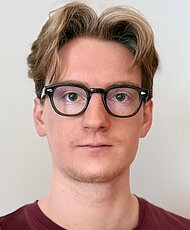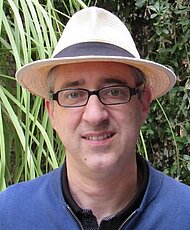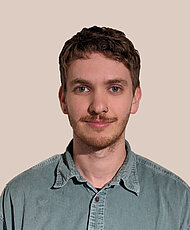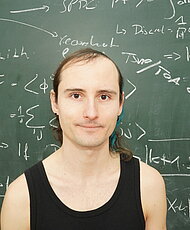Quantum theory makes the most accurate empirical predictions and yet the controversy in interpreting what are its philosophical and epistemological implications continues even after 80 years of active discussion. A possible lesson to be learned from not finding a univocal interpretation is that there might be something intrinsically deficient in mere idea of looking for the meaning of a physical theory exclusively on the basis of its formalism (“from the inside”), instead of extracting meaning, along with extracting the formalism, in the course of a derivation of the theory from some deeper physical principles (“from the outside”). Acting on this realization, there has been growing interest over the last decade in elucidating the physical content of quantum theory by attempting to formulate a set of simple, comprehensible physical principles from which the theory can be reconstructed.
After Hardy’s seminal work in 2001, we were the first group to achieve a full derivation of quantum theory from simple physical principles in 2009 [1]. In particular we showed that classical probability theory and quantum theory – the only two probability theories for which we have empirical evidences – can be reconstructed from four reasonable axioms: (1) (Information capacity) An elementary system has the information carrying capacity of at most one bit. (2) (Subspace axiom) All elementary systems are equivalent. (3) (Local Tomography) The state of a composite system is completely determined by measurements on its subsystems. (4) (Reversibility) Between any two pure states there exists a reversible transformation. If one requires the transformation from the last axiom to be continuous, one separates quantum theory from the classical probabilistic theory.
In another reconstruction of quantum theory, we showed that the structure of the underlying probabilistic theory cannot be modified (for example by replacing quantum theory with a more general probabilistic theory) without changing the (three-) dimensionality of space [2]. In an operational physical theory, one distinguishes two spaces, the “state space of the system” and the physical space in which “laboratory devices” are embedded. The theory is called “closed”, if the “laboratory devices” are not considered “outside” of the theory, but are required to be obtained from within it in the macroscopic (classical) limit. (For example, the “classical magnetic field” can be seen as a limit of a large coherent state, where a large number of spin-1/2 particles are all prepared in the same quantum state). We showed that under plausible assumptions quantum theory and the three-dimensional physical space are the only solution for a “closed” theory.
State space of a two-dimensional system in generalized probabilistic theories (from left to right): classical bit, quantum bit, real bit and generalized bit. d is the minimal number of real parameters necessary to describe completely the state.
[1] B. Dakic and Č. Brukner, Quantum Theory and Beyond: Is Entanglement Special?, Contribution to “Deep beauty”, Editor Hans Halvorson (Cambridge University Press, 2010). Preprint at arXiv:0911.0695
[2] B. Dakic and Č. Brukner, The classical limit of a physical theory and the dimensionality of space, in “Quantum Theory: Informational Foundations and Foils”, Eds. G. Chiribella, and R. Spekkens. (Fundamental Theories of Physics, Volume 181, Springer, 2016). Preprint at arXiv:1307.3984.
Additional reading:
Feature of New Scientist (31 August 2010), R. Webb, Is quantum theory weird enough for the real world? with cover page “The ultimate quantum paradox”.
Brukner Group

Caslav Brukner
Stellv. InstitutsdirektorGruppenleiter+43 (1) 4277 - 72582

Veronika Baumann
Postdoktorandin

Carlo Cepollaro
Doktorand (Univie)

Linqing Chen
Postdoktorandin

Nathan Cohen
Doktorand (Univie)

Anne-Catherine De la Hamette
Doktorandin (Univie)

Benjamin Kesetovic
Masterstudent

Robert Oeckl
Visiting Senior Scientist

Stefano Osnaghi
Postdoktorand (Univie)

Robin Simmons
Doktorand (Univie)

Antoine Soulas-Debraine
Postdoktorand (Univie)
